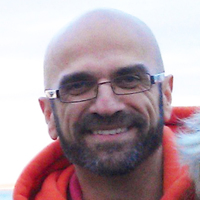Day 1 :
Keynote Forum
Konstantinos Kormas
University of Thessaly, Greece
Keynote: Bacteria as true residents in the gastrointestinal tract of commercially reared fish

Biography:
Abstract:
Keynote Forum
Susanne Zeilinger
University of Innsbruck, Austria
Keynote: From genes to biocontrol: Unraveling the molecular mechanisms of mycoparasitic fungus-fungus interactions
Time : 11:55-12:35

Biography:
Susanne Zeilinger has studied Microbiology and Genetics from the University of Vienna and during her Diploma thesis she gained experience in fungal enzyme characterization from the VTT Technical Research Center of Finland. She did her PhD from the Technical University of Vienna (TUW) on fungal cellulase gene regulation. As a Post-doctorate she has worked on Trichoderma biocontrol at TUW and as a Visiting Scientist at the Institute of Plant Pathology in Portici, Naples, Italy. In 2003, she became the Group Leader in the Research Area of Biotechnology and Microbiology at the Institute of Chemical Engineering at TUW. Since 2015, she is a Full Professor for Microbiology at the University of Innsbruck, Austria. Her research focuses on molecular fungal biology with a special interest in interactions of fungi with other (micro-) organisms, bio-communication and signal transduction.
Abstract:
Keynote Forum
Raimondas Jasevicius
Vilnius Gediminas Technical University, Lithuania
Keynote: Numerical modeling of the mechanical interaction of a bacterium
Time : 12:35-13:15

Biography:
Abstract:
- Microbial Association-Microbial Interactions | Plant-Microbe Interaction | Agricultural Microbiology | Host Microbe Interactions
Location: Forum 10

Chair
Konstantinos Kormas
University of Thessaly, Greece

Co-Chair
Robert Czajkowski
University of Gdansk, Poland
Session Introduction
Mayada Ali Salah Eldin Sabra
Alexandria University, Egypt
Title: Beneficial root endophytic fungi change growth and oil composition of sweet basil in heavy metal contaminated soil

Biography:
Abstract:

Biography:
Abstract:
Hossein Bannazadeh Baghi
Tabriz University of Medical Sciences, Iran
Title: Alphaherpesviruses Infection in the Upper Respiratory Tract

Biography:
Abstract:
Xia Yu
University of Helsinki, Finland
Title: A comparative characterization of different host-sourced Lactobacillus ruminis strains and their adhesive, inhibitory, and immunomodulatory functions

Biography:
Abstract:
Alexandre Bourles
University of New Caledonia, New Caledonia
Title: New Burkholderia sp. isolated from pioneer plants roots of ultramafic soils, play a key role in the plant adaptation to harsh edaphic conditions

Biography:
Bourles A is a PhD student at the ISEA (Institute of Exact and Applied Sciences), University of New Caledonia, New Caledonia.
Abstract:
Hyeonjeong Lee
Pohang University of Science and Technology, South Korea
Title: Microbial respiration-based screening of residual enrofloxacin in milk using capillary tube indicators

Biography:
Hyeonjeong Lee is a PhD candidate in Chemical Engineering at Pohang University of Science and Technology (POSTECH), Korea. Her research is focused on the development of biosensors for detecting bacteria, protein, and chemicals based on multifunctional nanoparticles.
Abstract:
A simple method was developed for detecting enrofloxacin in milk using microbial respiration and capillary-tube indicators. A glass vial containing E. coli ATCC 11303 in LB was spiked with enrofloxacin and sealed with a screw cap supporting a silicon septum. A capillary tube with a drop of ink was inserted through the septum, and the ink-level change was measured. The growth of E. coli produced CO2 gas, which increased the pressure inside the vial and raised the ink level in the capillary tube; in this manner, small changes in the gas volume were translated into large changes in the ink level. The increase in the ink level was inversely proportional to the concentration of enrofloxacin, which suppressed the growth of E. coli. The detection limit of enrofloxacin was found to be 10 ng/Ml by using the naked eye after the microbial culture had been permitted to grow over 2 hours.

Biography:
Francisco Medina-Paz has completed his Master’s from Center for Research and Advanced Studies of the IPN. Currently, pursuing his PhD and working on the assembly of the root microbiome of bean at the Center for Research and Advanced Studies of the IPN, Mexico. His major goal is to integrate molecular and bioinformatics tools into field ecological work to understand mechanisms that determine plant-microbe interactions under natural conditions.
Abstract:
Plant roots harbor a specific endophytic microbiome, which is largely obtained horizontally from the external (rhizospheric) soil microbiome. Both microbiomes contribute, e.g., to nutrient uptake and plant resistance. Endophytic bacteria colonize the root tissue despite the plant immune system. It remains an open question to which degree the microbiome's stability or dynamism over the lifetime of the plant depends on vertically versus horizontally transmitted bacteria. Here, we analyzed 16S rRNA gene amplicons generated from rhizosphere and endosphere samples of field-grown common bean (Phaseolus vulgaris) plants (root samples excluded nodules) and from in vitro cultured plants. We detected Firmicutes such as Paenibacillus in the in vitro samples, indicating a vertical mode of transmission of these putatively plant-growth promoting bacteria. Dominant taxa in the endosphere were Proteobacteria such as Rhizobium and Agrobacterium, which are suggested to contribute to plant nutrition and hormone synthesis. Overall, the diversity in the root endosphere was approximately 5-10 times lower than in the rhizosphere samples. Interestingly, the endophytic microbiomes did not change significantly over three phenological stages (plants with three true leaves, early flowering phase and during pod filling). We conclude that root microbiomes can reach equilibrium early during the ontogeny of a plant and that vertically transmitted bacteria can contribute to the root microbiome of bean plants. An ongoing project employs metagenomic data to obtain a better understanding of the processes that determine the assembly of the root microbiome of bean plants under field and in vitro conditions.
- Microbial Ecology | Environmental Microbiology | Microbial Diseases and Epidemiology | Microbial Biotechnology | Bioremediation | Plant-Microbe Interactions | Soil Microbiology | Probiotics-Prebiotics Research
Location: Forum 10

Chair
Andreas Vilcinskas
University of Giessen, Germany
Session Introduction
Gülşen Altuğ
Istanbul University, Turkey
Title: Occurrence and distribution of Bacillus species in Turkish marine environments

Biography:
Gulsen Altug (Prof. Dr.) is a Professor and Marine Microbiologist in the Department of Marine Biology of the Fisheries Faculty at Istanbul University. Her research focuses on marine bacteriology, including bacterial diversity and micro-geographical variations, clinical, industrial and ecological uses of marine isolates, bacterial pollution, epibiotic bacterial communities and anti-bacterial characteristics, bacterial remediation (oil degrading capacity of marine isolates), and resistant bacterial isolates against heavy metals and antibiotics. She is also the Inventing Founder of the biotechnology start-up company named Biyotek15 R&D Training and Consulting Industry and Trade Ltd. Company in Entertech of Istanbul University Technocity.
Abstract:
Although Bacillus species are isolated in both terrestrial and marine environments, marine bacilli display more effective metabolically peculiarities depending on the specific environmental conditions of marine habitats. While Bacillus species play a significant role in biogeochemical recycling processes of metal salts, some of them described as potential biocontrol agents. In this study, occurrence and distribution of Bacillus species were investigated using culture-dependent and independent methods in the sea water samples taken from various marine areas of Turkey in different periods between 2000 and 2016. Variable environmental parameters; temperature, salinity, conductivity, pH and dissolved oxygen were recorded in-situ. The members of Bacillaceae were identified using both culture dependent methods; VITEK compact 30 micro identification system and molecular methods; bacterial DNA isolation, real time PCR (Q-PCR), PCR product purification, DNA sequence analysis and phylogenetic analysis. Micro-geographical distribution of Bacillus species and environmental variables were determined. The most common species were recorded to be B. flexus. Besides, Bacillus cereus, B. thuringiensis, B. pumilus, B. firmus, B. mycoides, B. megaterium, B. oceanisedimini, Geobacillus stearothermophilus showed high frequency of occurrence. The metabolic characteristics and color, spore-forming forms and resistivity frequencies against heavy metal salts of the strains have been shown that marine bacilli isolated from the marine areas have significant potential for possible biotechnological applications such as remediation of heavy metal polluted areas, can be used as a source of natural carotenoids and bio-drugs.

Biography:
Martin Heil obtained his Doctoral degree in Ecology from Würzburg University, Germany, performed Postdoctoral studies in France, was Junior Group Leader at the Max-Planck-Institute for Chemical Ecology in Jena, Germany, and Chair of the Department of General Botany at Essen University, Germany. In 2007, he moved to CINVESTAV Irapuato, Mexico, where he leads the Plant Ecology Lab. He is on the editorial boards of Trends Plant Sci., J Ecol., J Chem. Ecol., Front Plant Sci. and Oecologia. He has published 130 journal articles to which Research Gate registers over 8000 citations (h-index 42).
Abstract:
Sexually transmitted diseases (STDs) such as Syphilis, Hepatitis B and C, or the Human Immunodeficiency Virus (HIV), maintain an asymptomatic, 'silent' mode of infection over extended time periods. Moreover, increased sexual activity, promiscuity and risk-taking sexual practices have been observed among HIV-infected men, particularly men who have sex with men (MSM). Both features complicate early diagnosis and therapy, favour transmission rates and represent a major driver of the world-wide increase in STD infection rates. I propose the 'host manipulation hypothesis' as a framework to understand phenotypic and behavioural in human hosts to STDs. A manipulation of host phenotypes by parasites has been suggested as an evolutionary explanation of seemingly odd phenomena like the 'fatal' attraction of Toxoplasma-infected mice to cat urine, enhanced risk-taking behavior in Toxoplasma-infected men, or the attraction of Plasmodium-vectoring mosquitoes to people with Malaria. A literature survey revealed that STDs are under-represented in the literature on fatigue and sickness behaviour, as compared to non-sexually transmitted human infections. Evidently, STD agents would gain significant adaptive benefits when they employ mechanisms that suppress host sickness behaviour (including decreased sexual activity) or avoid the rejection of infected partners during mating. Moreover, reports on enhanced testosterone levels in mammals infected with Toxoplasma gondii or Feline Immunodeficiency Virus (FIV) provide attractive models of molecular mechanisms that could underlie the intriguing behavioural changes in HIV-infected MSM. I hope that this ecologist’s perspective will motivate interdisciplinary research aimed at an understanding of the specific effects of STDs on human hosts.
